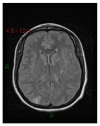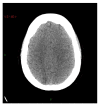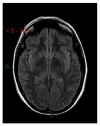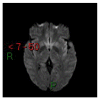Management of posterior reversible syndrome in preeclamptic women
- PMID: 25506009
- PMCID: PMC4254080
- DOI: 10.1155/2014/928079
Management of posterior reversible syndrome in preeclamptic women
Abstract
Posterior reversible encephalopathy syndrome (PRES) is a neurological syndrome associated with a number of conditions including preeclampsia. It is characterized by seizures, alteration of consciousness, visual disturbances, and symmetric white matter abnormalities, typically in the posterior parietooccipital regions of the cerebral hemispheres, at computed tomography (CT) and magnetic resonance (MRI). We report three new cases of PRES in preeclamptic patients and describe the management of these patients. We present a brief review of other cases in the literature, with particular attention to the anesthetic management.
Figures






References
LinkOut - more resources
Full Text Sources
Other Literature Sources

